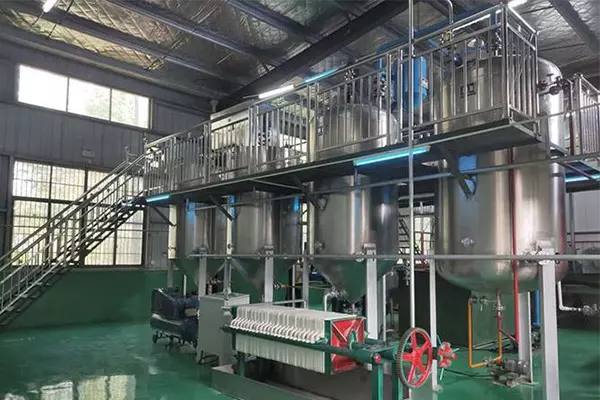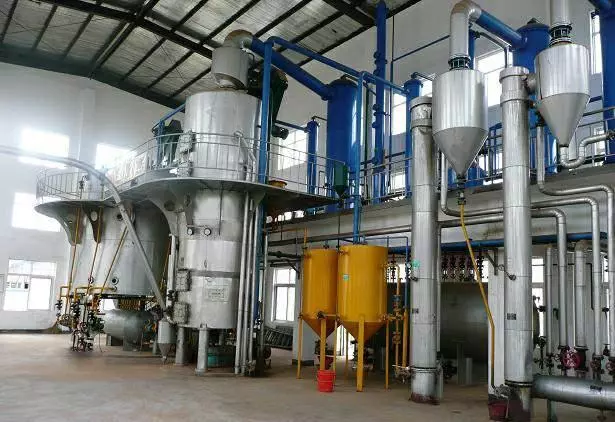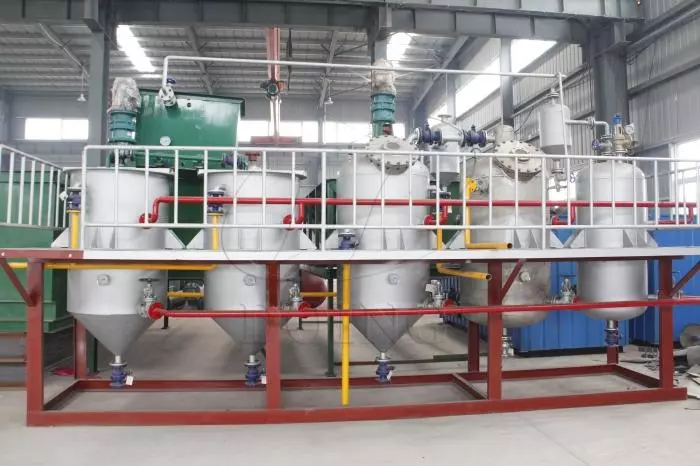
Introduction
The palm oil bleaching process is a critical step in refining edible palm oil. This process typically takes place before deodorization. You need to add clay, which absorbs pigments, to the oil and heat the mixture. Then filter the oil-clay mixture and dry the spent cake to remove any remaining oil. During this process, you will remove color, residual phosphatides, soaps, and metals.
What is the traditional way of bleaching palm kernel oil?
Traditionally, you can use acid-activated clay for bleaching palm kernel oil. This clay, rich in carbon and having a low pH, serves as an excellent filtration medium. It is commonly used during oil purification, distillation preparation, pesticide removal, and product improvement (odor removal).
In a batch system, add acid-activated clay (about 2-5% by mass) to hot oil, which extracts color bodies. Then separate the cleansed oil from the clay by settling and press filtration. This process is repeated until you achieve the desired color. Each pass loses an amount of oil approximately equivalent to the mass of clay used.
A semi-continuous system can be set up where hot oil is forced through an activated clay bed under pressure, with the clay held within the filter system. This method is more time-efficient but also more capital-intensive.

Detailed bleaching process of palm oil refinery
The actual palm oil bleaching process is complex. The effectiveness of the process relies on the correct ratio of bleaching earth to crude palm oil.
- Vacuum Processing: To minimize air influence and reduce clay consumption, you should perform earth bleaching under vacuum.
- Clay Dosage: Base the clay dosage on the color requirements of the final palm oil.
- Filtration: Flush the bleached oil through closed stainless steel filtration discs to ensure minimal residue in the meal. The filter operates automatically to ensure stable production and ease of operation.
Acid-activated bleaching earth is the most commonly used absorbent material. Also known as bleaching clay, bentonite, or fuller’s earth clay in some regions, its primary component is aluminum silicate. Not all color-producing materials are removed by the bleaching earth. Many are eliminated through thermal destruction during deodorization.
The primary purpose of the palm oil bleaching process is to absorb impurities in the crude oil, especially saturated and unsaturated fats. The bleaching earth also neutralizes free fatty acids (FFA), enhancing the efficiency of the final stages and ensuring high-quality finished palm oil.
Factors affecting the palm oil bleaching process
The effectiveness of the palm oil bleaching process depends on several key factors:
- Temperature and Humidity: Crude palm oils were bleached at 105 °C, for 30 min at 50 mmHg pressure. Afterwards, a deodorization step was performed at 260 °C, 3 mbar, 1.5% steam for 60 min. You need to carefully control the temperature and humidity during the bleaching process to ensure optimal absorption.
- Quality of Refinery Machines: High-quality refinery machines are crucial for efficient bleaching. Make sure you use reliable and well-maintained equipment.
- Structure and Type of Bleaching Earth: The type and structure of the bleaching earth you use significantly impact the bleaching process. Choose the appropriate bleaching earth to achieve the best results.

Conclusion
At Huatai Oil Machinery, we prioritize efficient and high-quality refining equipment in the palm oil bleaching process. Our advanced machinery and refined processes ensure that our clients receive the best results. If you need detailed information about palm oil refinery plants and refinery equipment, feel free to contact us at 0086-159-3728-9608.
Frequently asked questions
Yes, you can bleach palm kernel oil using acid-activated clay.
The process involves adding clay to the oil, heating the mixture, and filtering and drying the spent cake to remove any remaining oil and impurities.
Blackened bleached palm oil can result from excessive heat, overused clay, or improper processing conditions.
Vitamin E, a natural antioxidant, can be lost during the bleaching process.
Properly bleached palm oil is not carcinogenic. However, using poor quality or contaminated bleaching earth can introduce harmful substances, so quality control is essential.
Get your best price
- Engineer quick quote
- The overall delivery speed is fast
- Financial choice
- Low installation costs and cost savings
30 years+ of oil mill plant R&D
More than 56 innovative technologies
